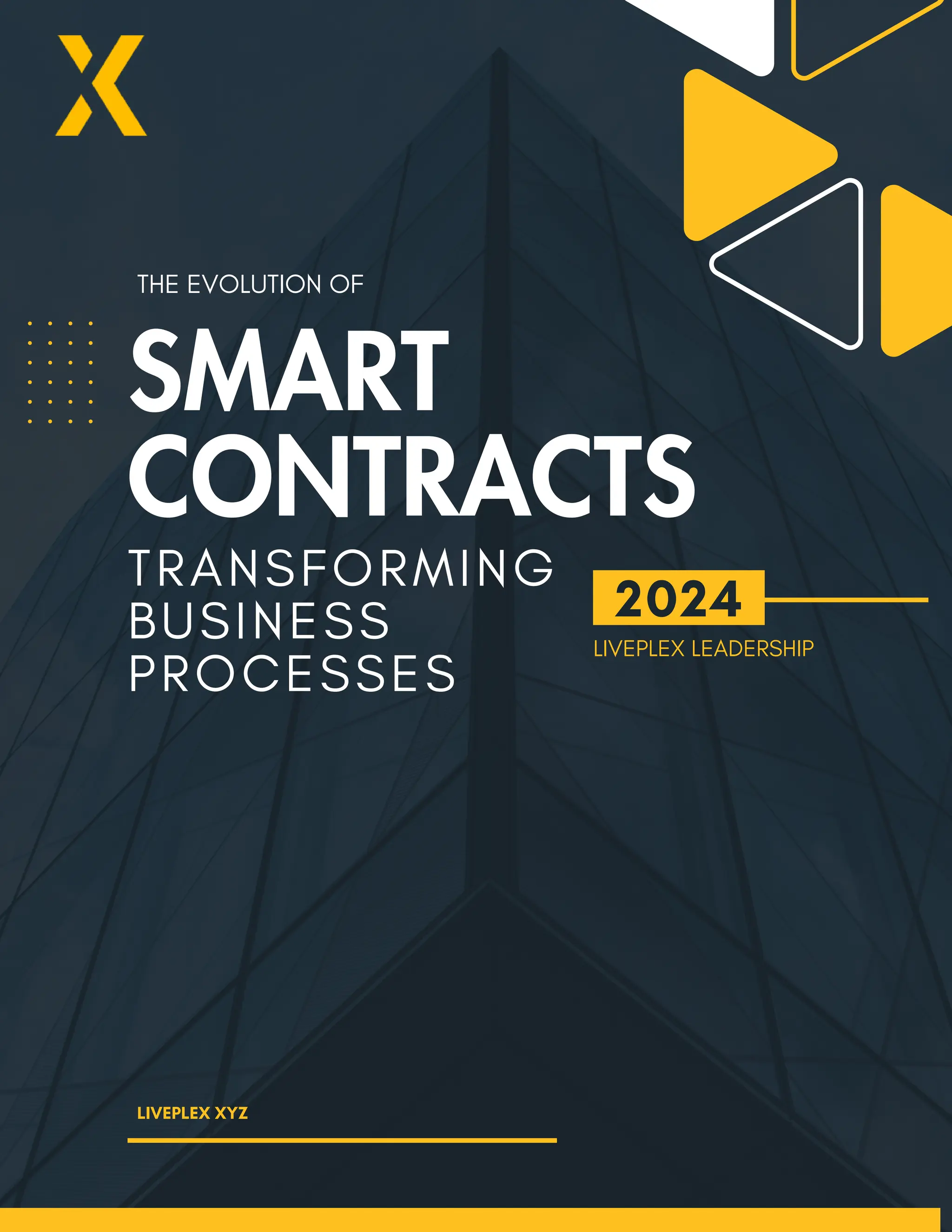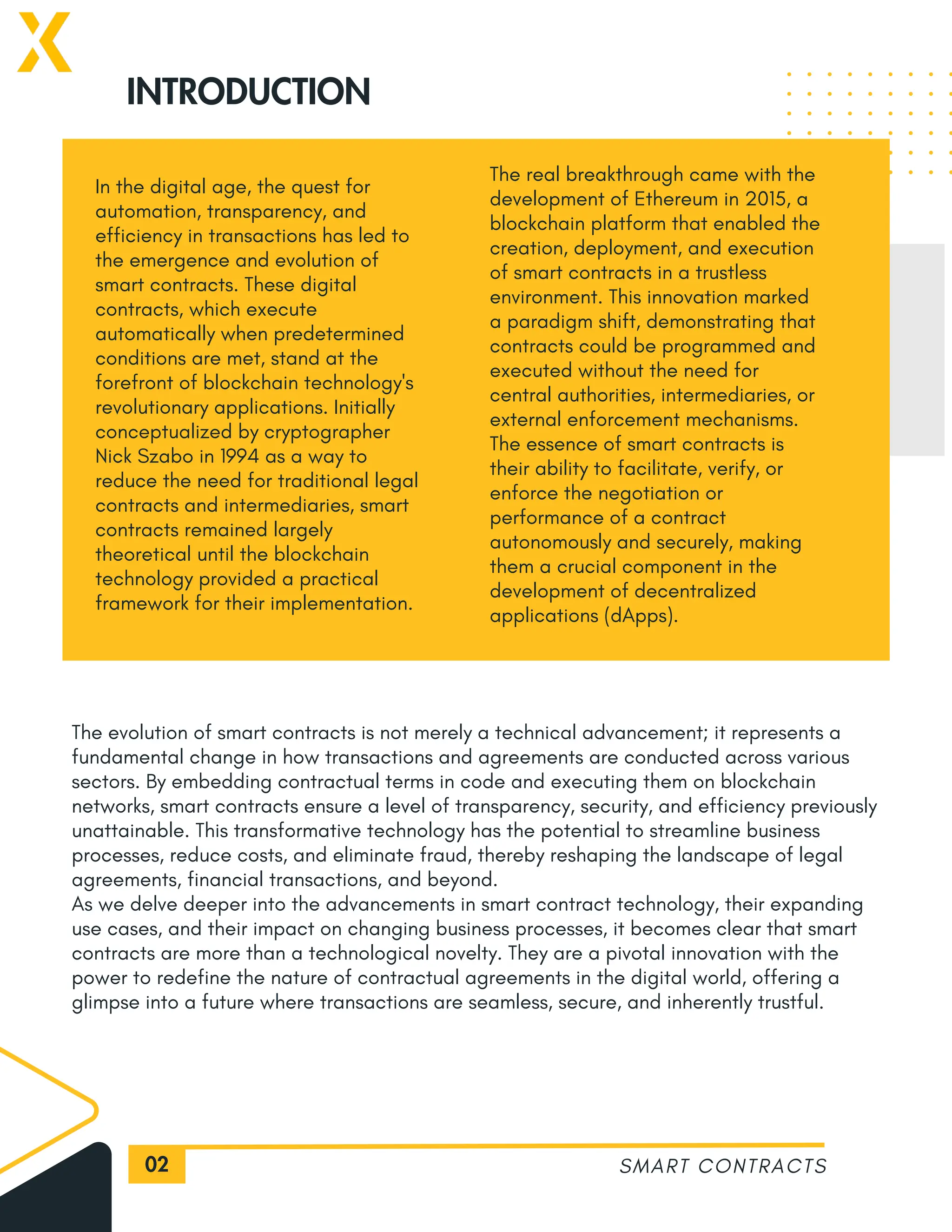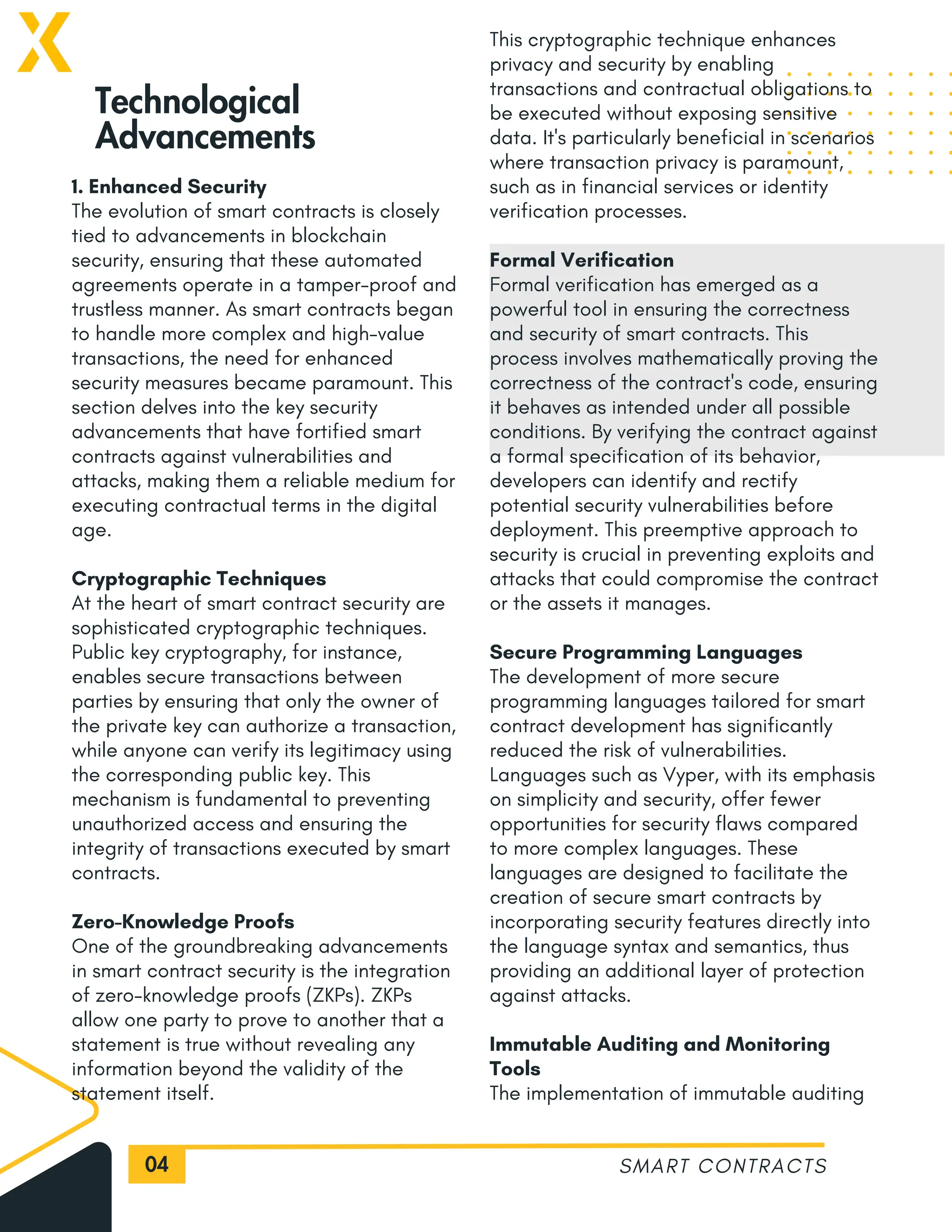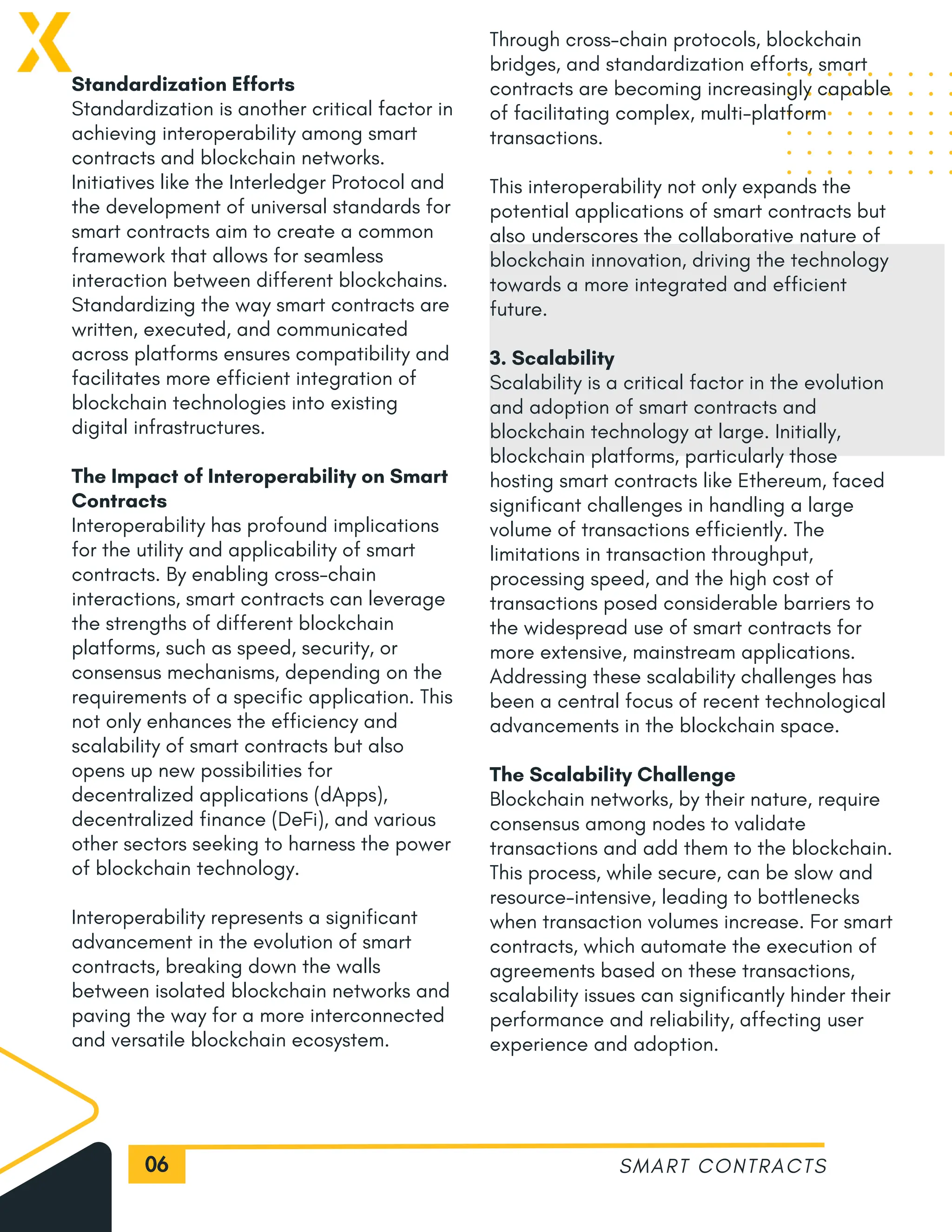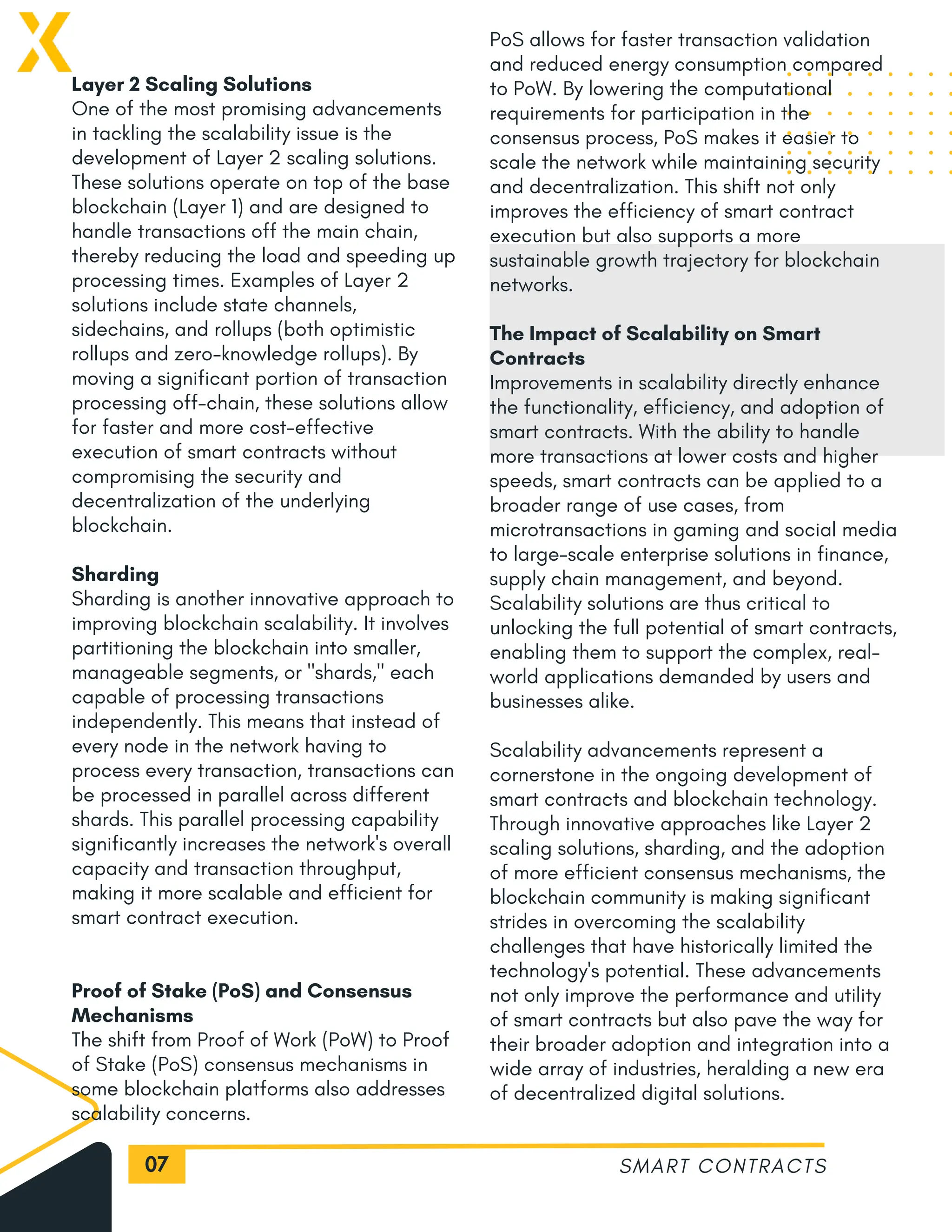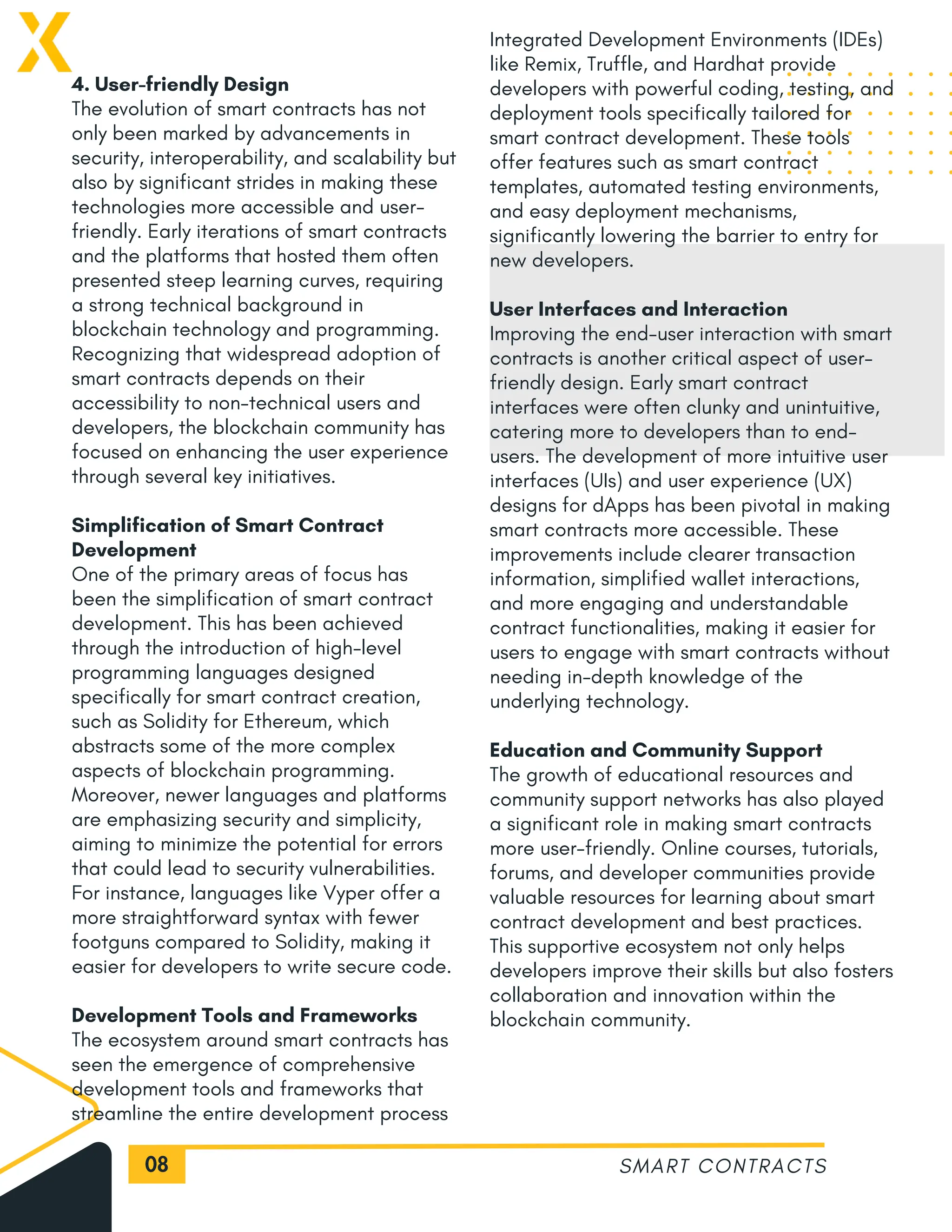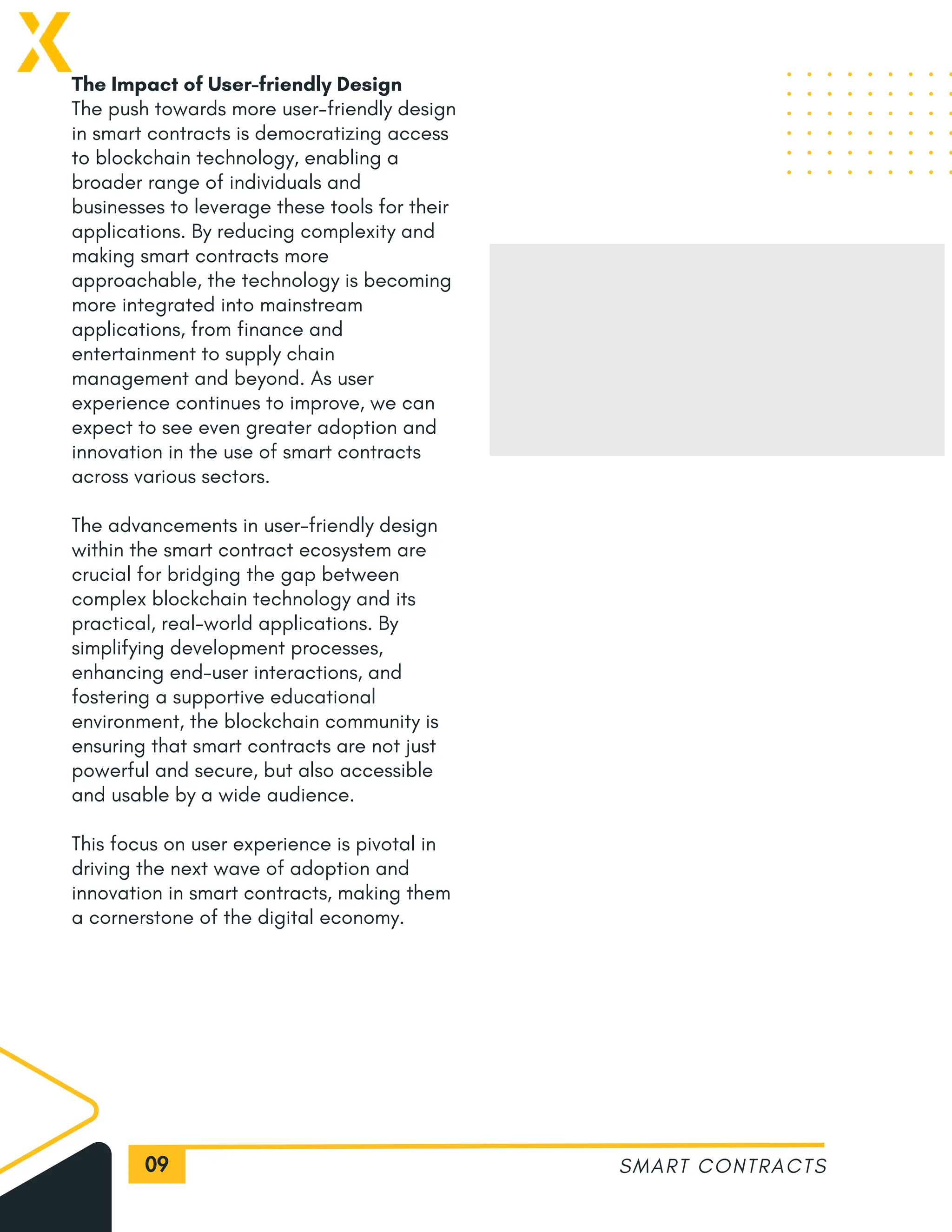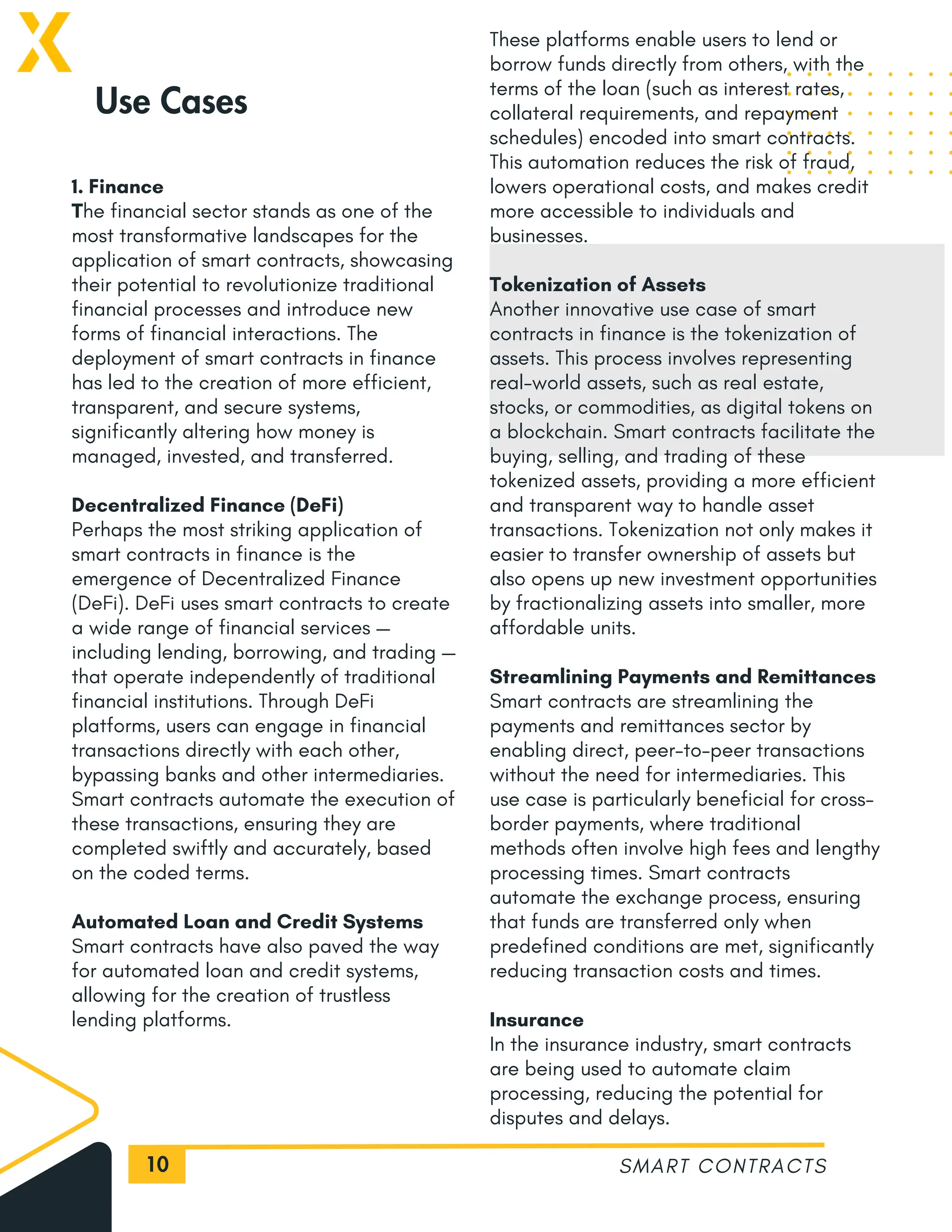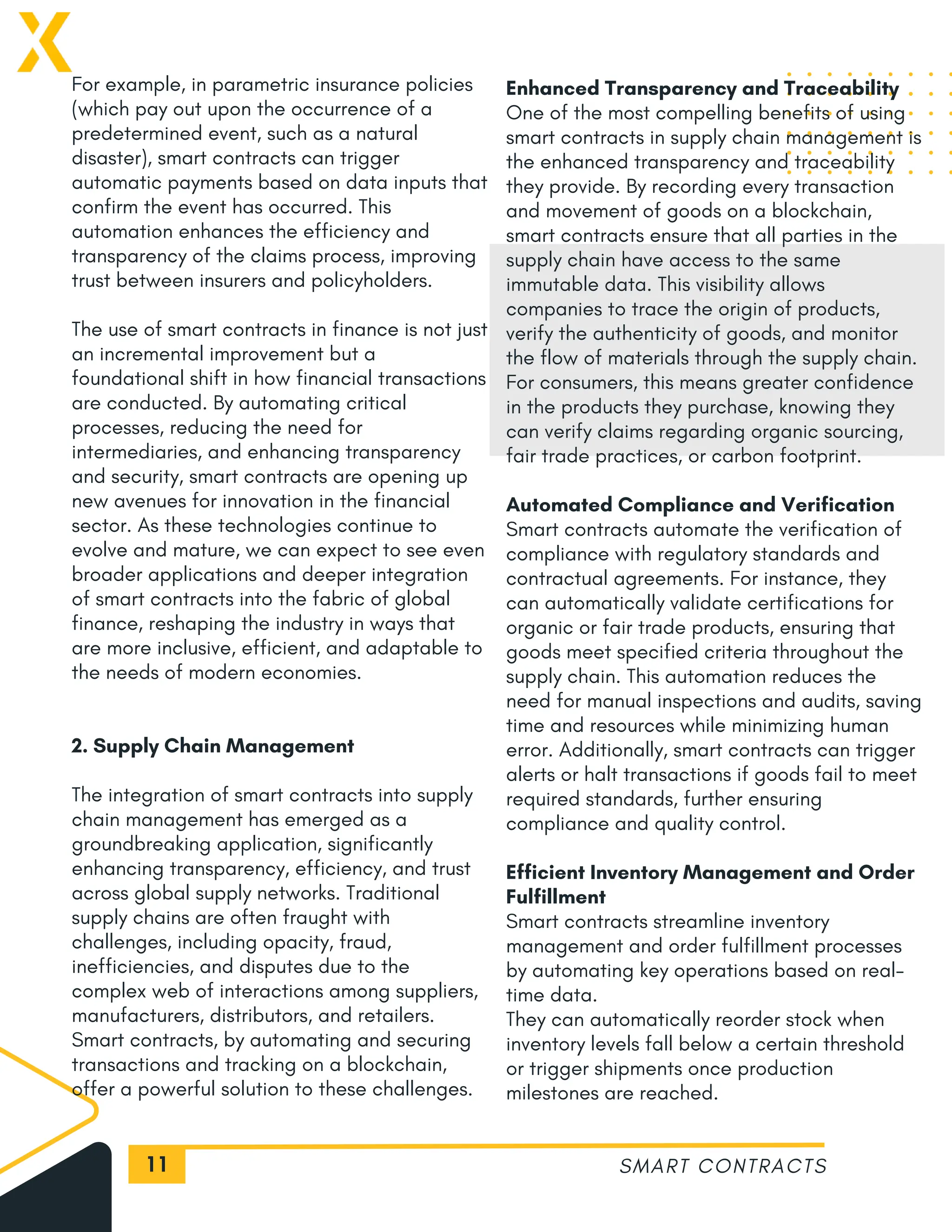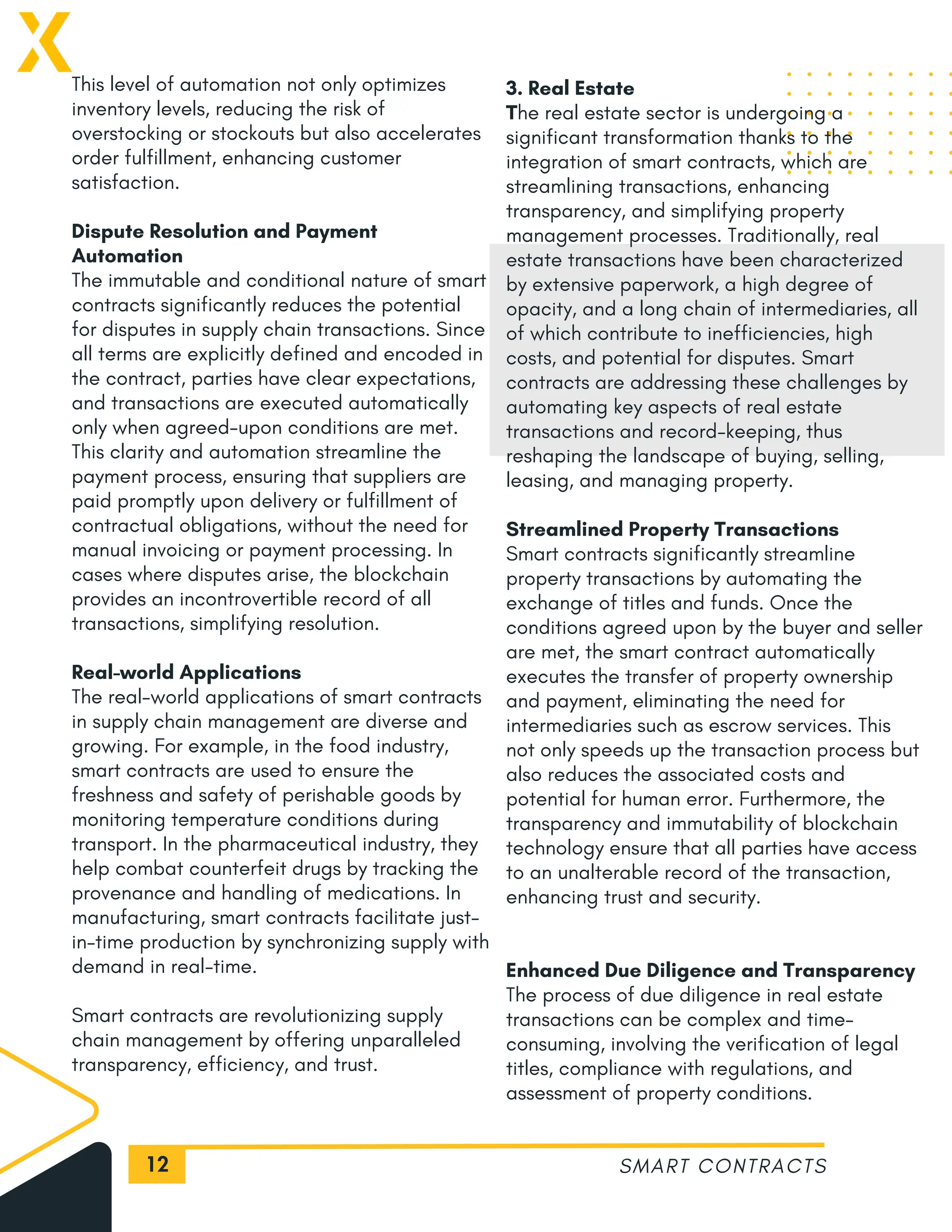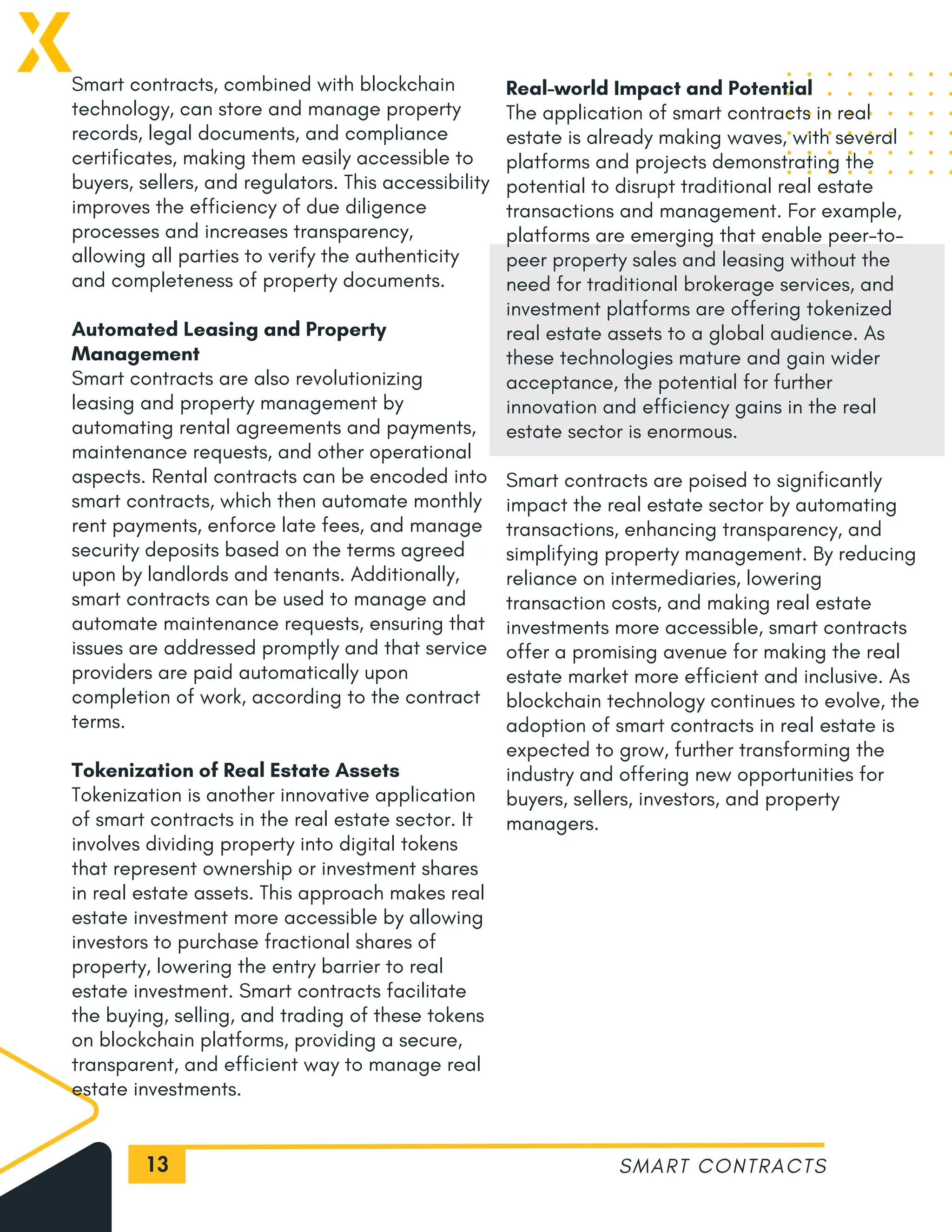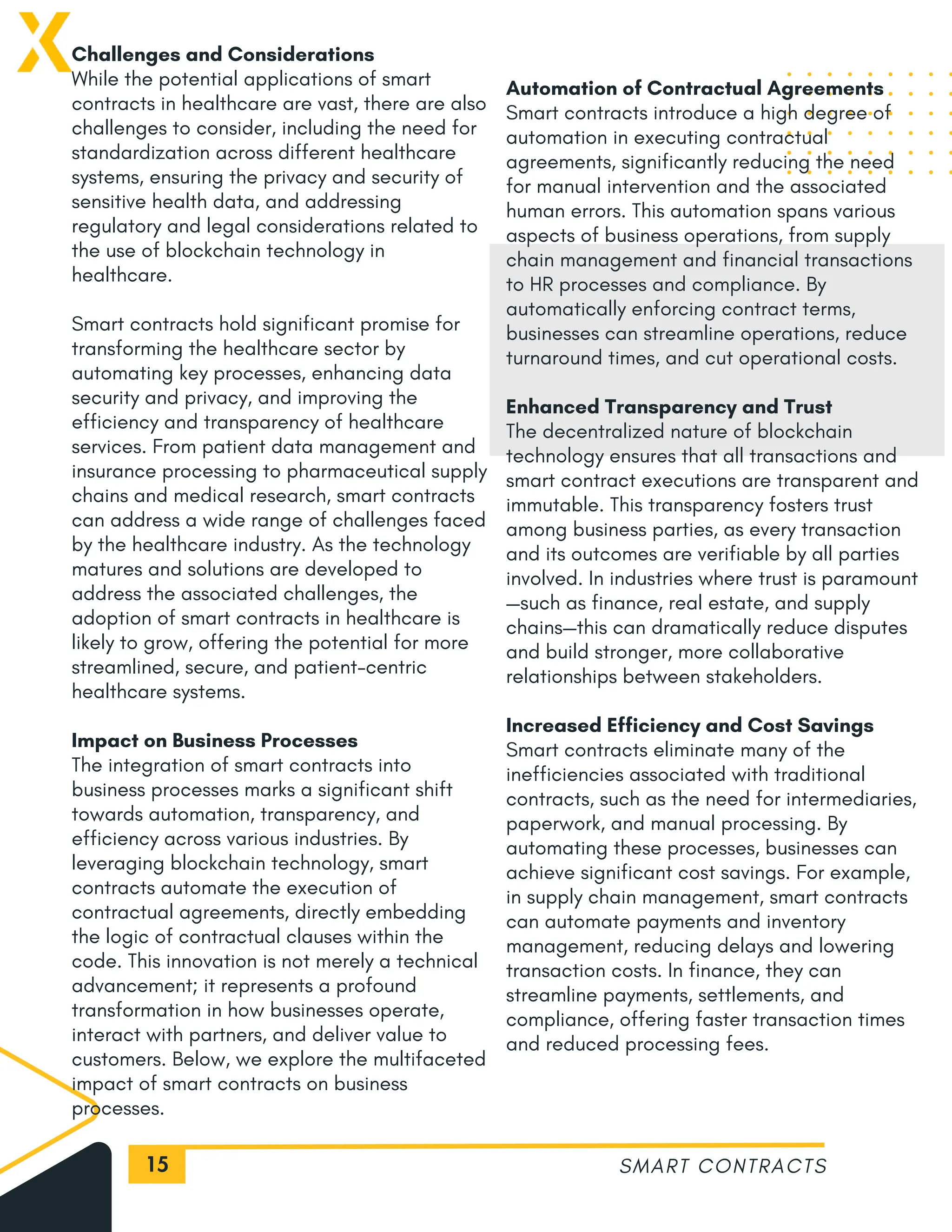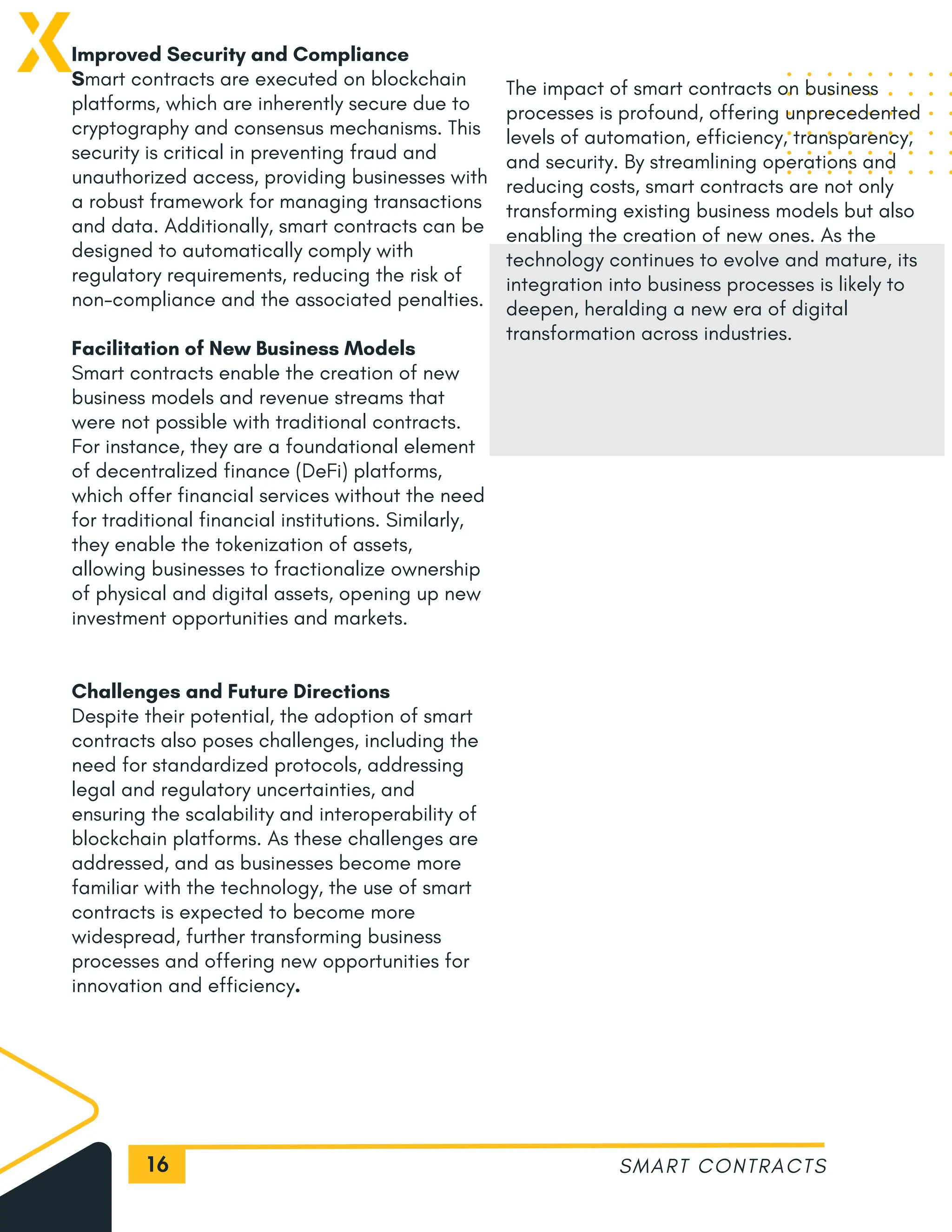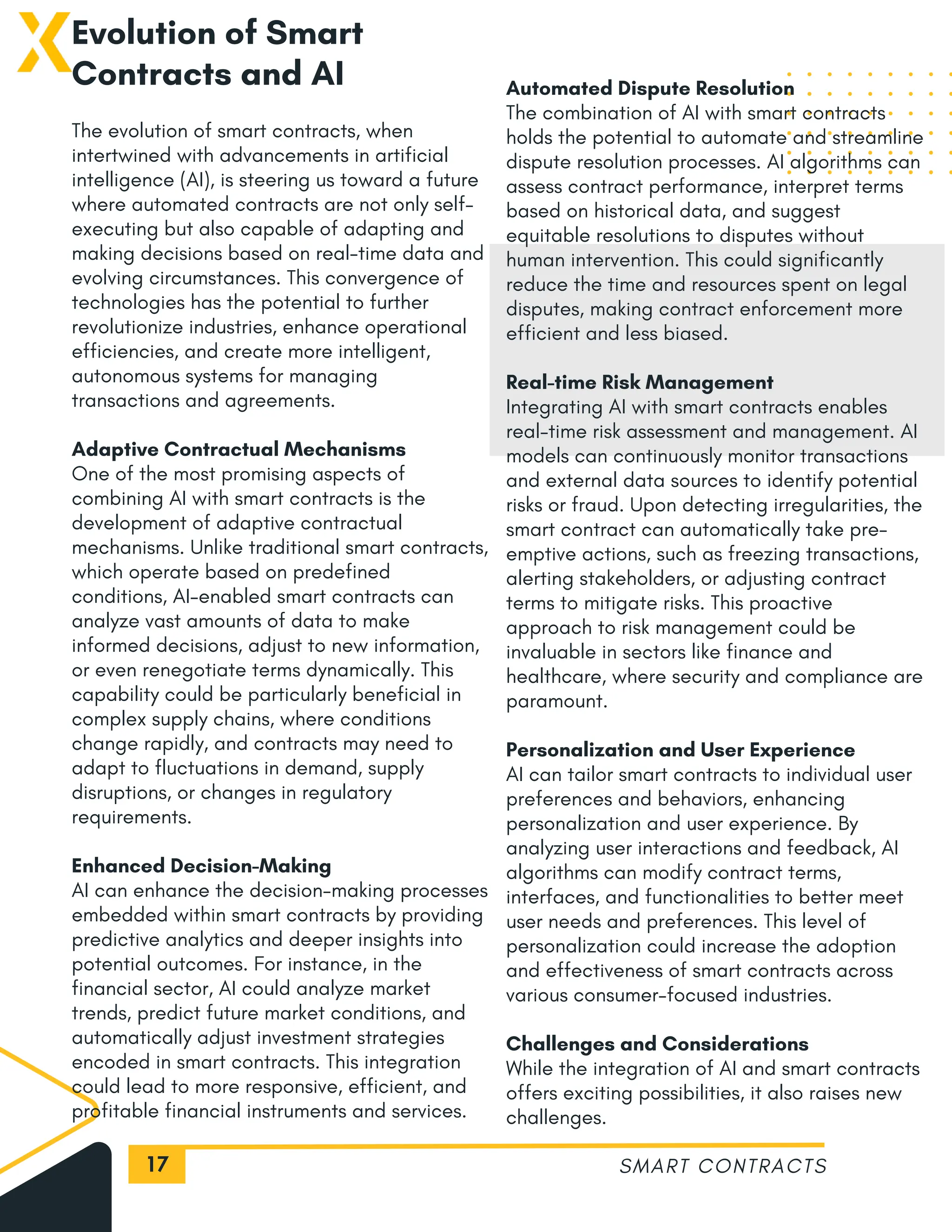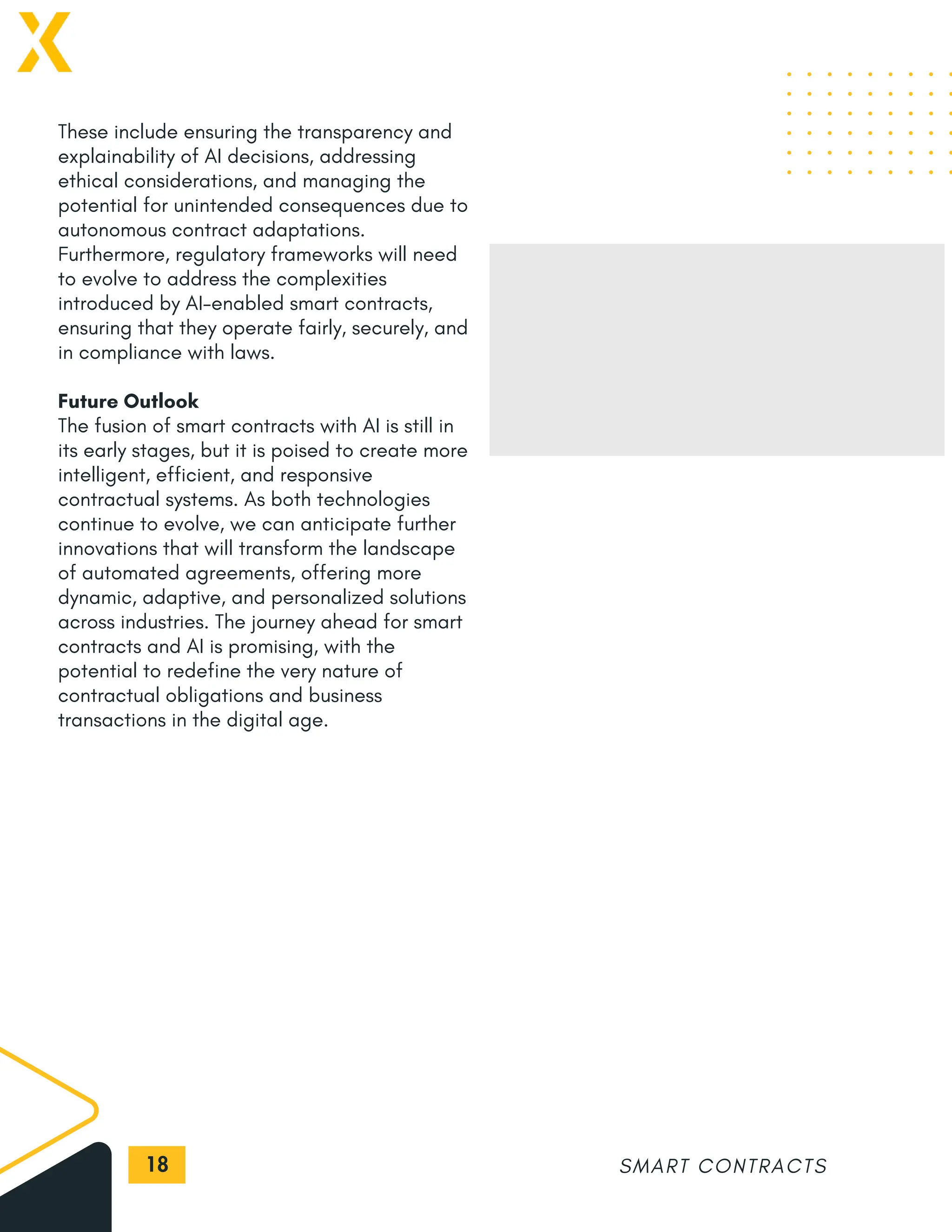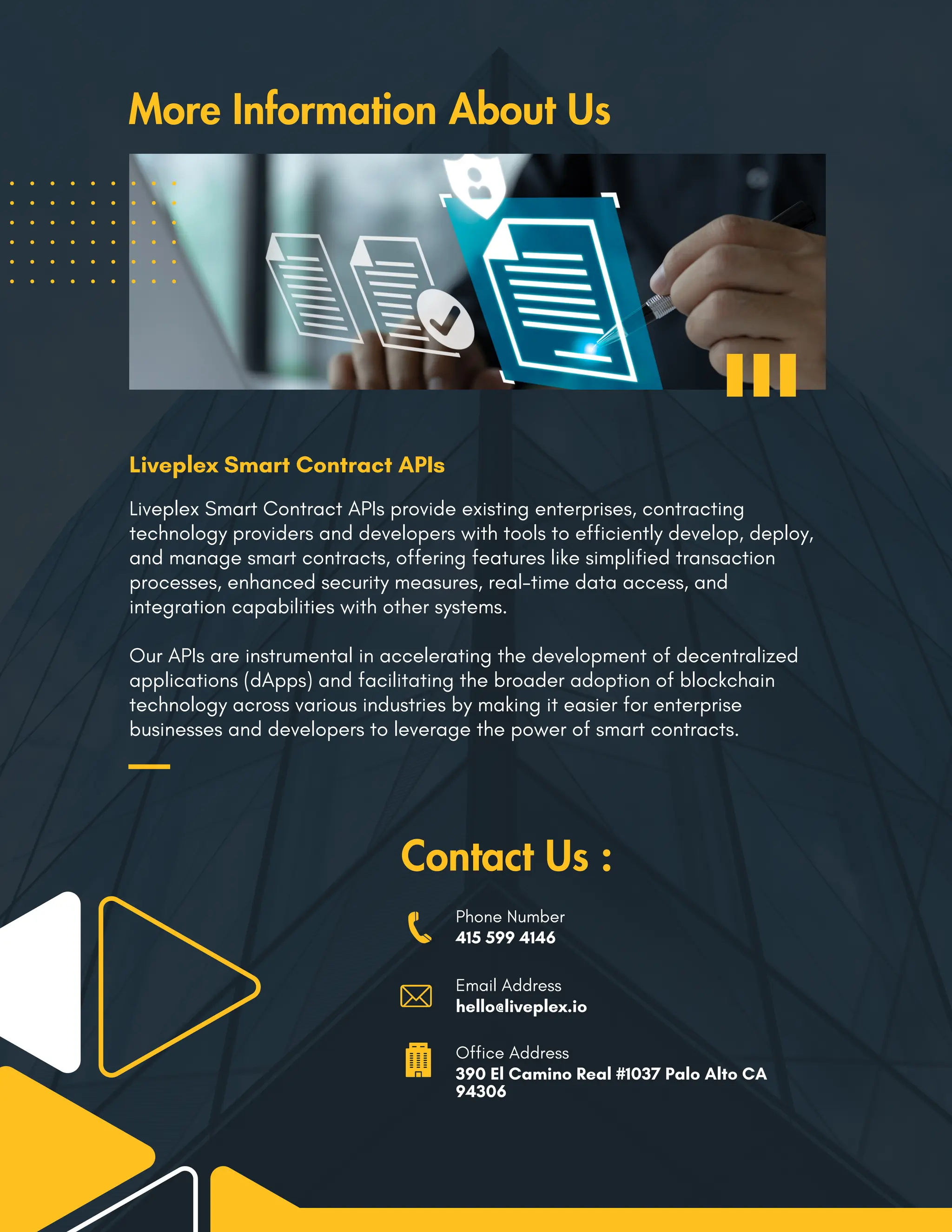Smart contracts, driven by blockchain technology, have evolved from theoretical concepts to practical applications that transform business processes by ensuring automation, transparency, and security in transactions. The advent of platforms like Ethereum has enhanced their functionality and interoperability, while advancements in security, scalability, and user-friendly design are paving the way for broader adoption across various sectors, particularly in finance and decentralized applications. As these innovations continue to mature, smart contracts are poised to redefine contractual agreements and facilitate seamless, trustful interactions in the digital economy.
